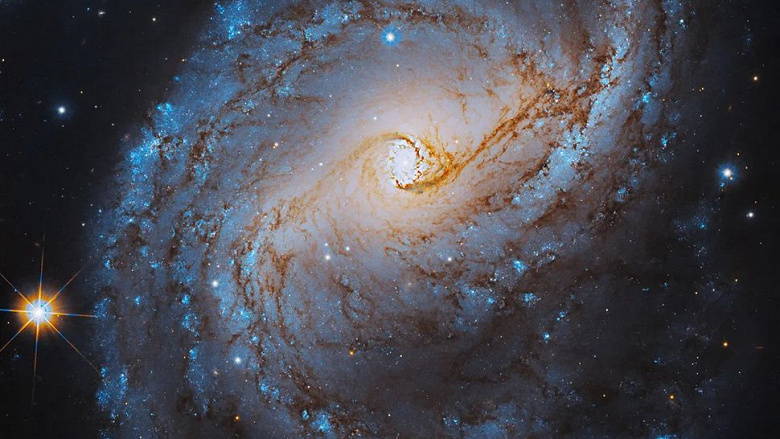Hubble’s image of spiral galaxy NGC 6951 shows its bright blue spiral arms, bars, patches of star clusters, and clumps of dust.
The galaxy NGC 6951, which lies 78 million light-years from Earth, was captured in a new Hubble image created by the Wide Field Camera (WFC3) and the Advanced Camera for Surveys (ACS).
The image shows bright blue spiral arms, star clusters, and a dark orange dust cloud.

The history of this galaxy is quite amazing. About 800 million years ago, NGC 6951 was known for its high rate of star formation, but then star formation stopped for 300 million years. Over the past 25 years, six powerful supernova explosions have occurred, causing the extinction of some of these stars. The average age of a star cluster in the galaxy is between 200 and 300 million years, but some have reached the age of one billion years.
An angle straight to the heart: Hubble captured a detailed image of the spiral galaxy NGC 6951
NGC 6951 is classified as a Type II Seyfert galaxy due to its infrared emission and the presence of a slow-moving gaseous environment at the center. However, some astronomers also consider it to be a low-ionization galaxy with an emission line in the core, implying a cooler and less ionized core.
Near the center of the galaxy lies a supermassive black hole, which is surrounded by a ring of stars, gas, and dust with a diameter of about 3,700 light years. This ring is also known as the “central ring” and is thought to have star formation for 1 to 1.5 billion years, with 40% of its mass consisting of stars less than 100 million years old.
This image of NGC 6951 is part of NASA’s Hubble Photo Sharing Campaign, which features new images taken by the space telescope every day from October 2 to October 7.




